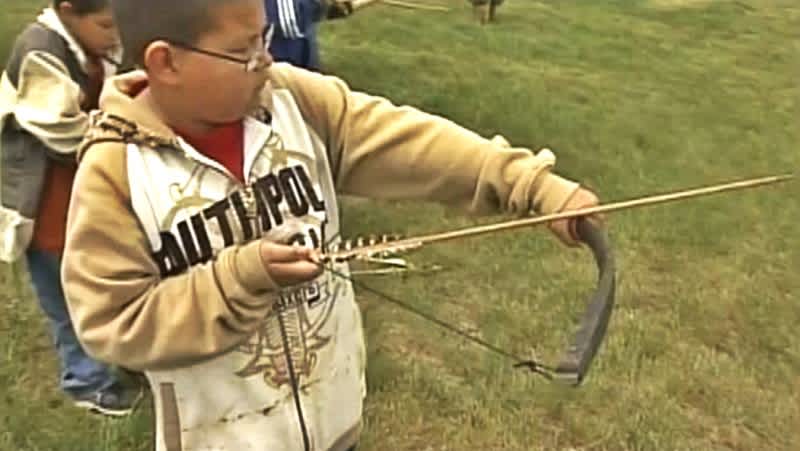Bow and Arrow: Grand Ronde Tribes Connect with Lost Tradition
OutdoorHub Reporters 07.26.13

Oregon businessman Jack Holthaus started the Bring Back the Bow Program roughly 10 years ago, and he did so because of a dream. Then in his 60s, Holthaus long held a fantasy of hunting buffalo from horseback with a self-made bow. In an attempt to fulfill this dream Holthaus traveled to the Cheyenne River Reservation in South Dakota to see a man who had hunted buffalo from horseback before. According to The Oregonian, the man refused to teach Holthaus because of his age. Undeterred, Holthaus decided to stay in the small village where the man lived to see if time could change his mind. The village was home to just about a dozen families, yet the children were eager to learn more about archery from Holthaus. In time he turned away from his dreams of hunting buffalo and settled on teaching the next generation of would-be archers.
For 10 years Holthaus and his volunteers–initially hunters–have held camps in South Dakota to teach youngsters the elements of bow building and archery. Two years ago he approached the Confederated Tribes of Grand Ronde in his home state of Oregon. The tribal leaders were interested in reviving what they believed to be a lost piece of their culture and promised to help Holthaus with the resources he needed to make it possible.
The Grande Ronde tribes consist of 27 tribes that included the Umpqua, Molalla, Kalapuya, Chasta and Rogue River peoples. Originally from the Willamette River area, the Grande Ronde tribes have been living on the land for thousands of years before the arrival of Lewis and Clark. In 1856 the tribes were moved to the Grand Ronde Reservation by the U.S. Government to free up land for pioneer expansion. The reservation land was purchased by the U.S. Army from farmers and the tribes had to depend on the government for food as well as medical supplies. The land also left a bad first impression on the new homesteaders as it was sparse in game and disease devastated the newcomers. Due to the lack of quarry and their sudden displacement, the long tradition of bowhunting within the tribes started to wane.
In 1954 Congress terminated the tribes’ sovereign rights and for the next 27 years the tribes would survive as an unrecognized government. During this time many of the reservation’s inhabitants left for other parts of the country. After the restoration of Grande Ronde reservation, the tribes called for projects that would restore many traditional skills and crafts lost to their culture, including canoe crafting, basket weaving, and bow building.
“We were terminated at one time,” said resident Brian Krehbiel. “So a lot of our traditional practices were terminated, too. […] I didn’t have anything like this when I was a kid.”
Now young children, teenagers, and even adults line up to take part in Bring Back the Bow. Marcus Gibbons is participating along with his teenage son Osprey, and is trying to teach the 15-year-old a little of their culture.
“Osprey, make a nice one you can keep,” Gibbons said as his son crafted a long bow out of a wooden stave. Take your time. Put your medicine into it. This is something your ancestors did.”
In the camp several volunteer experts, some from the Traditional Archers of Oregon, coach their young charges through process of transforming wood into bows. The youngest practice on rattan bows and an archery range lies nearby.
“The kids all love it,” says Patti LeClaire, who helps to sand down the bows. “Look how intensely they are listening to their instructors.”
Overseen by master bow-maker John Strunk, other students shape bows out of hardier material like young hazelnut. Along with these traditional skills the students are also taught the values of respect, honesty and courage. As for Holthaus, he was able to finally bowhunt buffalo on a ranch in Montana. With the help of a friend, the now 74-year-old was able bring down a buffalo with two arrows. It was done with a prized Lakota-style osage bow that he crafted himself.
Bring Back the Bow is funded by private donations and supported by the hard work of volunteers. You can find out more on their website.
A video of the program’s workshops can be seen below:

